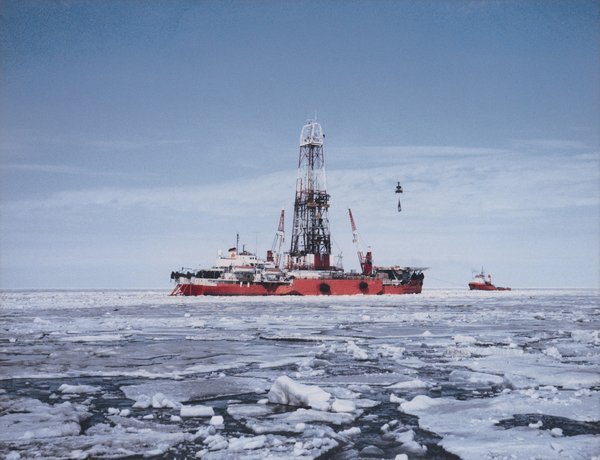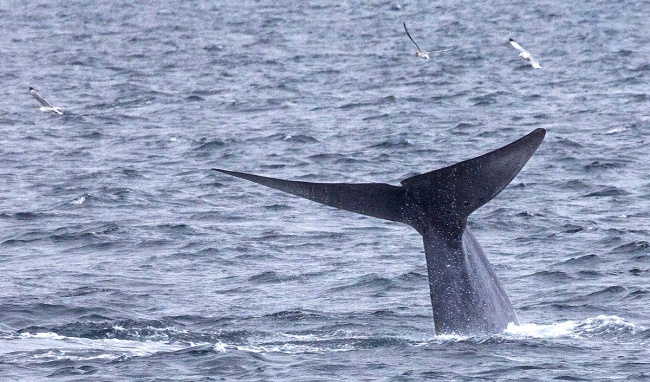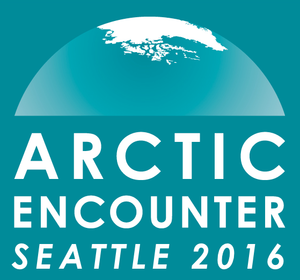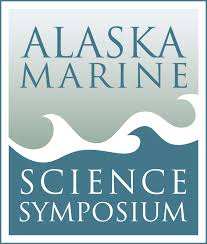|
|
|
|
|
|
|
|
 Fall meeting of the American Geophysical Union, December 14-18, 2015 (San Francisco, California). The 48th meeting of the union brings together nearly 24,000 attendees, and lots of Arctic research results. The scientific program is here. There will be several Arctic-related "Town Hall" meetings, including those sponsored by NASA, DOE, NSF, ISAC, IARPC, and SEARCH. Fall meeting of the American Geophysical Union, December 14-18, 2015 (San Francisco, California). The 48th meeting of the union brings together nearly 24,000 attendees, and lots of Arctic research results. The scientific program is here. There will be several Arctic-related "Town Hall" meetings, including those sponsored by NASA, DOE, NSF, ISAC, IARPC, and SEARCH.
Today's Congressional Action:
The House is not in session. The Senate is expected to consider non-Arctic nominations.
|
The Arctic Institute Initiates a Kickstarter Campaign. Since 2012, The Arctic This Week has been delivering readers the latest Arctic news summarized, organized, and interpreted, with links to interesting, inventive, and enjoyable stories. In over 200 weekly editions, we have shared nearly 40,000 stories from the top of the world with readers in over 90 countries. TATW includes local, regional, and international perspectives on recent events north of the Arctic Circle to give balanced, objective, and comprehensive coverage of a region that interests many. After four years of production, we have passed 2,000 subscribers! This means that The Arctic Institute must expand its subscriber limit to allow new subscribers to receive TATW and help us engage more readers with news from the North. Help support us through our Kickstarter campaign and keep TATW alive and thriving! Kickstarter
 New Maps Available. NGA joined organizations from the National Science Foundation (NSF) and the United States Geological Survey (USGS) to partner with the University of Minnesota and other members of the academic research community, private sector and international partners. Together, these partners are working to create the first ever publicly available, high resolution, satellite-based elevation map of Alaska by mid-2016 and the entire Arctic by mid-2017. These initiatives by NGA support the US Chair of the Arctic Council and the President's Executive Order on Enhancing Coordination of National Efforts in the Arctic. NGA Arctic GEOINT Services New Maps Available. NGA joined organizations from the National Science Foundation (NSF) and the United States Geological Survey (USGS) to partner with the University of Minnesota and other members of the academic research community, private sector and international partners. Together, these partners are working to create the first ever publicly available, high resolution, satellite-based elevation map of Alaska by mid-2016 and the entire Arctic by mid-2017. These initiatives by NGA support the US Chair of the Arctic Council and the President's Executive Order on Enhancing Coordination of National Efforts in the Arctic. NGA Arctic GEOINT Services
New Method Predicts Sea Ice Changes Years in Advance. Climate scientists present evidence in a new study that they can predict whether the Arctic sea ice that forms in the winter will grow, shrink or hold its own over the next several years. The new study, published today in Geophysical Research Letters, a journal of the American Geophysical Union, finds that changes in North Atlantic Ocean circulation could allow overall winter sea ice extent to remain steady in the near future, with continued loss in some regions balanced by possible growth in others, including in the Barents Sea. America Geophyscial Union
El Nino vs. the Polar Vortex: So far, it's El Nino in a Wipeout. Warm enough for you? Ski areas are getting nervous in the Northeast, a confused southern bird has been spotted in New York City, and Buffalo has yet to see snow, something that hasn't happened there in December since records began shortly after the Civil War. So far, in the USA's weather contest between the warmth of El Niņo and the icy cold of the infamous Polar Vortex, it's been El Niņo in a wipeout. USA Today
 Shell May be Gone, But Quest for Arctic Offshore Oil Continues. Arctic offshore drilling by Royal Dutch Shell PLC drew protests on two continents this year, but a more modest proposal for extracting petroleum where polar bears roam has moved forward with much less attention. While Shell proposed exploratory wells in the Chukchi Sea about 80 miles off Alaska's northwest coast, a Texas oil company wants to build a gravel island as a platform for five or more extraction wells that could tap oil 6 miles from shore in the Beaufort Sea. Alaska Dispatch News Shell May be Gone, But Quest for Arctic Offshore Oil Continues. Arctic offshore drilling by Royal Dutch Shell PLC drew protests on two continents this year, but a more modest proposal for extracting petroleum where polar bears roam has moved forward with much less attention. While Shell proposed exploratory wells in the Chukchi Sea about 80 miles off Alaska's northwest coast, a Texas oil company wants to build a gravel island as a platform for five or more extraction wells that could tap oil 6 miles from shore in the Beaufort Sea. Alaska Dispatch News
Interactive Map Blends Traditional, Modern Knowledge in Nunavut. Samson Tooktoo dropped a yellow plastic conductivity, temperature and depth device or CTD into the waters near Kuujjuarapik. That device showed that the water in southern Hudson Bay on that day was fresh at the top and didn't get very salty until about five meters down, then maintained relatively the same salinity down to 45 meters and beyond. We know all that thanks to Tooktoo, scores of other hunters and community members on the eastern Hudson Bay coast, and a unique interactive online platform developed by Sanikiluaq's Arctic Eider Society and launched last week. Nunatsiaq Online
 Rapid Arctic Warming Drives Shifts in Marine Mammals, New Research Shows. New hydrophone surveys of migration gateways to the Arctic show that recent extremes in sea ice loss has opened new waters to humpback and fin whales that once ranged through the far north only in summer. And as climate change drives the ice into further retreat, such "summer" species may begin competing with bowhead whales that once had the habitat to themselves, according to research presented at the Society of Marine Mammalogy's Biennial Conference in San Francisco this week. Phys.Org Rapid Arctic Warming Drives Shifts in Marine Mammals, New Research Shows. New hydrophone surveys of migration gateways to the Arctic show that recent extremes in sea ice loss has opened new waters to humpback and fin whales that once ranged through the far north only in summer. And as climate change drives the ice into further retreat, such "summer" species may begin competing with bowhead whales that once had the habitat to themselves, according to research presented at the Society of Marine Mammalogy's Biennial Conference in San Francisco this week. Phys.Org
Senator Questions US Readiness in the Arctic. As Russia continues its arctic military build-up with December 9th deployment of an S-300 equipped air defense missile regiment on the Novaya Zemlya islands, Senator Dan Sullivan continues to press US Brass on the importance of Alaska's strategic location. Speaking at a Senate Arms Services Committee hearing this week, Sullivan referenced a section of the National Defense Authorization Act requiring Secretary of Defense Ash Carter form an operation plan for the Arctic. A pair of high-ranking military officials told the committee that the US's single ice breaker does not compare to the fleets possessed by other arctic, and non-arctic countries. WebCenter
|
Legislative Action
No Arctic legislation was formally considered Friday.
|
|
Future Events
"Arctic Matters" day at the National Academy of Sciences, January 14th, 2016 (Washington, DC, USA) This symposium is part of an ongoing initiative of the National Academies of Science Polar Research Board to expand public understanding of why the dramatic changes affecting the Arctic region ultimately matter to us all. The agenda features engaging presentations and discussions with top Arctic science and policy experts, and displays and interactive exhibits that illustrate Arctic change and its global impacts. The event is free and open to the public. There are sponsorship opportunities, and a call for exhibitor applications. Audience space is limited, so register today; and please encourage your friends, neighbors, and colleagues to participate-as our goal is to reach well beyond the small circle of specialists who typically attend Arctic-themed events in the DC area. The U.S. Arctic Research Commission is the primary sponsor of this event.
 Building upon the preceding Arctic Encounter event in Paris, the third annual Arctic Encounter Symposium (AES) in Seattle, Washington will convene policymakers, industry leaders, and leading experts to confront the leading issues in Arctic policy, innovation, and development. The AES mission is to raise awareness, engage challenges, and develop solutions for the future of a region and a people. The two-day program includes two keynote luncheons, expert plenary sessions, break out sessions, a networking cocktail reception and seated dinner. A closing reception will take place at the conclusion of the program. Building upon the preceding Arctic Encounter event in Paris, the third annual Arctic Encounter Symposium (AES) in Seattle, Washington will convene policymakers, industry leaders, and leading experts to confront the leading issues in Arctic policy, innovation, and development. The AES mission is to raise awareness, engage challenges, and develop solutions for the future of a region and a people. The two-day program includes two keynote luncheons, expert plenary sessions, break out sessions, a networking cocktail reception and seated dinner. A closing reception will take place at the conclusion of the program.
 2016 Arctic Frontiers, January 24-29, 2015 (Tromso, Norway).The Arctic is a global crossroad between commercial and environmental interests. The region holds substantial natural resources and many actors are investigating ways to utilise these for economic gain. Others view the Arctic as a particularly pristine and vulnerable environment and highlight the need to limit industrial development. Arctic Frontiers 2016 will discuss the balance between resource utilisation and preservation, and between industrial and environmental interests in the Arctic. Envisioning a well-planned, well-governed, and sustainable development in the Arctic, how can improved Arctic stewardship help balance environmental concerns with industrial expansion? How can the industrial footprints from future business activities be minimised? And last, but not least, what role will existing and emerging technologies play in making industrial development profitable and environmentally friendly, securing a sustainable growth scenario for Arctic communities? 2016 Arctic Frontiers, January 24-29, 2015 (Tromso, Norway).The Arctic is a global crossroad between commercial and environmental interests. The region holds substantial natural resources and many actors are investigating ways to utilise these for economic gain. Others view the Arctic as a particularly pristine and vulnerable environment and highlight the need to limit industrial development. Arctic Frontiers 2016 will discuss the balance between resource utilisation and preservation, and between industrial and environmental interests in the Arctic. Envisioning a well-planned, well-governed, and sustainable development in the Arctic, how can improved Arctic stewardship help balance environmental concerns with industrial expansion? How can the industrial footprints from future business activities be minimised? And last, but not least, what role will existing and emerging technologies play in making industrial development profitable and environmentally friendly, securing a sustainable growth scenario for Arctic communities?

5th Annual Fletcher Opening Arctic Conference, March 12, 2016. The Opening Arctic Conference builds on the Fletcher School's Warming Arctic International Inquiry series, to bring together high-level thought leaders from across disciplines, Fletcher's hallmark. Staged annually, Fletcher's event continues to address the foreign policy, economic, environmental and security implications of the opening Arctic, while dispelling myths.
14th IATS Seminar, June 19-25, 2016 (Bergen, Norway). The University of Bergen (UiB) is honored to host the 14th IATS Seminar in Bergen, Norway, from Sunday 19 to Saturday 25 June 2016 in co-operation with the Network for University Co-operation Tibet-Norway, an academic network with the universities of Oslo, Bergen and Tromsø as partners. The convenor is Professor Hanna Havnevik, Department of Culture Studies and Oriental Languages, University of Oslo, and Chair of the Network.
ICETECH 2016, August 15-18, 2016 (Anchorage, Alaska, USA). The Arctic Section of the Society of Naval Architects and Marine Engineers (SNAME) together with Alaska's Institute of the North (ION) will host the International Conference and Exhibition on Performance of Ships and Structures in Ice (ICETECH 16), the premiere international conference on ships and structures in ice. The conference will take place in Anchorage starting with an opening icebreaker reception on the evening of Monday, August 15, and concluding in the afternoon on Thursday August 18, with a possible workshop on Arctic EER on Friday August 19.
Inuit traditions are a repository of Inuit culture and a primary expression of Inuit identity. The theme for the 2016 Inuit Studies Conference invites Elders, knowledge-bearers, researchers, artists, policy-makers, students and others to engage in conversations about the many ways in which traditions shape understanding, while registering social and cultural change. The institutional hosts of "Inuit Traditions," Memorial University of Newfoundland and the Nunatsiavut Government, invite you to contribute to an exchange of knowledge to be held in St. John's, Newfoundland and Labrador, October 7-10, 2016. Presentations on all aspects of Inuit studies will be welcome.
|
|

  
4350 N. Fairfax Drive, Suite 510
Arlington, VA 22203, USA
External links in this publication, and on the USARC's World Wide Web site ( www.arctic.gov) do not constitute endorsement by the US Arctic Research Commission of external Web sites or the information, products or services contained therein. For other than authorized activities, the USARC does not exercise any editorial control over the information you may find at these locations. These links are provided consistent with the stated purpose of this newsletter and the USARC Web site.
|
|
|
|
|
|
|
|
|